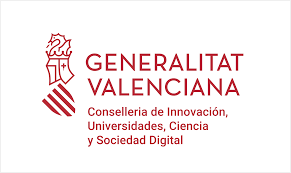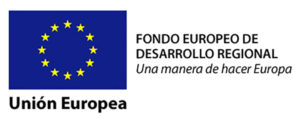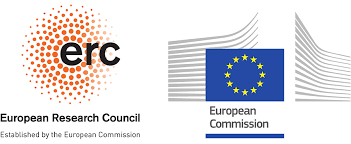Skip to content
2021
| Este proyecto consiguió ampliar, mejorar y fortalecer al Photonics Research Labs, grupo de referencia internacional en investigación dentro del campo de la Fotónica, a través de la adquisición de instrumentación y equipamiento inventariable de última generación en las áreas de la Fotónica de Microondas y de la Fotónica Programable: - Adquisición de capacidades de encapsulamiento de chips fotónicos a través de la incorporación de una máquina multifuncional, modular y ampliable diseñada para entorno de laboratorio de I+D, capaz de llevar a cabo, de forma automática, las diferentes tareas necesarias en el ensamblaje, preparación y encapsulamiento óptico, eléctrico, térmico y mecánico de circuitos fotónicos integrados de complejidad baja e intermedia. La opción modular permite un coste más reducido y la posibilidad de ampliaciones futuras si fuera necesario mediante la adquisición de nuevas capacidades implementadas por módulos futuros. Esta máquina, permite eliminar el límite tecnológico en diseños de chips escalables con una alta densidad de puertos ópticos y electrónicos, habilitando diseños disruptivos y con un amplio carácter innovador. - Adquisición de la capacidad de escribir variaciones periódicas y aperiódicas en todo tipo de guías circulares (fibras ópticas) y guías planas mediante la incorporación de un láser de femtosegundos de alta energía de pulso que genera un proceso de dos fotones y permite la variación de la estructura de la guía en tamaños nanométricos. Para ello, es necesario acompañar el láser de un sistema de alineamiento de ultra-precisión en los tres ejes con resoluciones de nanómetros, que tenga la flexibilidad de generar estructuras complejas en las guías y que permita posibles ampliaciones en un futuro cuando sea necesaria la evolución. Dado que son dos elementos que pertenecen a ámbitos industriales diferentes, se realizó la adquisición por separado para finalmente integrarlos. - Adquisición de la capacidad de medida y caracterización espectral de redes ópticas que emplean múltiples canales en nuevas y prometedoras ventanas ópticas, bien en términos de eficiencia energética (visible) o baja latencia y alta capacidad (banda de 2 micras). |
| Proyecto IDIFEDER/2021/050 cofinanciado por la Unión Europea a través del Programa Operativo del Fondo Europeo de Desarrollo Regional (FEDER) de la Comunitat Valenciana 2021-2027 |


2020
| Este proyecto consiguió ampliar, mejorar y fortalecer al PRL en particular y al instituto iTEAM en general a través de la adquisición de instrumentación y equipamiento inventariable de última generación en el campo de la fotónica de microondas y la Fotónica Programable:
- Adquisición de un osciloscopio en tiempo real para medida de señales en la banda de 0 a 70 GHz, ampliable hasta 110 GHz. Este equipamiento nos está permitiendo realizar medidas en el dominio del tiempo de pulsos y señales de radiofrecuencia de hasta 70 GHz, complementando al adquirido anteriormente para realizar medidas en el dominio de la frecuencia. Se emplea tanto en caracterización temporal de chips fotónicos programables como en la de componentes basados en fibra especiales MCF y FMF que procesan señales de entrada de radiofrecuencia e inalámbricas de alta velocidad.
- Ampliación de las capacidades de medida del laboratorio de fotónica integrada programable a través de la adquisición de equipamiento nano-posicionador motorizado programable que permita seis grados de libertad (3 de posición y 3 angulares) para medida de chips individuales con el objetivo de completar el equipamiento del puesto de trabajo de medida de chips programables en tecnología de silicio.
- Adquisición de una estación de trabajo para fusión y el conformado de vidrio, la cual ha permitido ampliar las capacidades del laboratorio de fibras ópticas del PRL habilitando la realización de empalmes entre diversos tipos de fibras ópticas, considerando tanto fibras estándar como fibras especiales (multinúcleo y de pocos modos); la producción de elementos de adaptación modal y geométrica (Tapers) entre núcleos de fibras diferentes; la escritura de lentes esféricas en extremos de las fibras y, en general, la realización de elementos combinadores (separadores) de señales a la entrada (salida) de fibras ópticas arbitrarias. |
| Proyecto IDIFEDER/2020/032 cofinanciado por la Unión Europea a través del Programa Operativo del Fondo Europeo de Desarrollo Regional (FEDER) de la Comunitat Valenciana 2014-2020 |


2021
2021-2024
| In this project we intend to develop new and disruptive devices based on inter-core crosstalk produced by the inscription of fiber diffraction gratings in the cores of a Multicore Optical Fiber (MCF) to improve the performance of Space Division Multiplexing (SDM) amplifiers, Reconfigurable Add-Drop Optical Multiplexers and optical sensors.
Tilted Fibre Bragg Gratings (TFBG) and Long Period Grating (LPG) in MCFs have shown that it is possible to deliberately and locally increase inter-core crosstalk in MCFs to transfer light from one core to another in a specific wavelength range. This project will study the optimization of the properties of these gratings and the modification of the fiber structure to increase this effect and proposes novel schemes to use this phenomenon in the design of optical devices for SDM networks and optical sensors. In particular, we propose to use inter-core crosstalk to implement a new injection scheme of the pumping signal in a distributed way. This scheme can contribute to improve the performance of SDM amplifiers, avoid current limitations, and increase the maximum detection range of the distributed optical sensors. Another application of this technology that will be explored in this project is the use of inter-core crosstalk as a mechanism to implement distributed optical sensors that can simplify the current interrogation schemes. |
| PID2020-120071RJ-I00 Project funded by MCIN/AEI/10.13039/501100011033. |

| Firstly, SYNERGY seeks a novel Spatial Division Multiplexing (SDM) fiber solution for a better optical True-Time Delay Lines (TTDL) performance for microwave signal processing in terms of RF bandwidth, chromatic dispersion range, number of signal samples and robustness against fabrication errors, going beyond our preliminary demonstrations in the field. Furthermore, it will explore the implementation of different optical signal processing functionalities, such as optical sampling or parallel chromatic dispersion compensation. Secondly, SYNERGY project aims at pioneering and developing innovative optical technologies based on specialty SDM fibers to revolutionize the future display of broadband fibers‐wireless communication scenarios. More specifically, the general goal is to exploit the inherent parallelism of multicore fibers, few‐mode fibers and combination of both to implement a variety of signal processing and multiparameter sensing applications featuring unique properties beyond the state of the art in terms of compactness, lightness, system stability, power efficiency, versatility and record bandwidth. Finally, SYNERGY will bring the chance to develop sensors not only with commercially available fibers but also with specialty ones, improving the sensor sensibility and providing novel techniques of interrogation for better requirement benchmarking. We want to explore the incorporation of specially designed cavities not only to use the reflected light, but also to exploit the benefits of retrieving the phase of the signal, while providing a robust design against external interferences. We plan as well to develop structures that will enhance the interaction with the external medium and postprocess the fibers with different coatings and terminations. |
| PID2020-118310RB-I00 Project funded by MCIN/AEI/10.13039/501100011033. |

2022
2022-2025
| El proyecto QUANTUMABLE está dividido a su vez en dos subproyectos. El objeto del primero de ellos, QUANTUMABLE-1, es expandir el concepto de FPPGA en fotónica de Silicio a una arquitectura que permita el procesamiento flexible de señales cuánticas a través de la programación de las matrices de transformación que describen la operación entre los modos de entrada y salida, la gestión de los qbits de redundancia (ancillas) y la interconexión de HPBs cuánticos. Lo que contempla a) El diseño de arquitectura de mallas en tecnología SOI y SiN, b) Diseño e integración de HPBs específicos (fuentes de fotones y detectores cuánticos), y c) Desarrollo de las capas de control y software adaptadas a la operación con señales cuántica. Por su parte, el objeto de QUANTUMABLE-2 es la fabricación, encapsulado, test y medida de los bloques fotónicos principales necesarios para la implementación de una QFPPGA empleando los resultados obtenidos en QUANTUMABLE-1. Se contempla como una transición imprescindible a la hora de verificar la viabilidad de los bloques diseñados como paso previo al ensamblaje final de un dispositivo completamente integrado. |
| Estos proyectos de I+D+i, COMCUANTICA/005 y COMCUANTICA/006, están financiados por el Plan complementario de I+D+i en Comunicaciones Cuánticas. Componente 17 «Reforma institucional y fortalecimiento de las capacidades del sistema nacional de ciencia, tecnología e innovación». Plan de recuperación, transformación y resiliencia (PRTR). |

2019
| Field-programmable gate arrays (FPGAs) have revolutionised the electronics industry. As their name implies, they are integrated circuits that can be programmed or reprogrammed by the customer to any required functionality or application after manufacturing - i.e. in the field. Now, the EU-funded FPPAs project is preparing a spin-off company to commercialise its technology that moves from programmable digital logic operations to optical interference for very high-speed analogue operations. The newly christened field-programmable photonic array (FPPA) could revolutionise the market now dominated by almost as many optical circuits for specific tasks as there are applications. An optical programmable chip could reduce design and fabrication costs while ushering in a new era of optical innovation. |
| This project has received funding from the European Union’s Horizon 2020 research and innovation programme under grant agreement No 859927 |

2023
| For over 5 decades, digital electronics has covered the increasing demand for computing power thanks to a periodic doubling of transistor density in integrated circuits. Currently, such scaling law is reaching its fundamental limit, leading to the emergence of a large gamut of applications that cannot be supported by digital electronics, specifically, those that involve real-time analog multi-data processing, e.g., medical diagnostic imaging, drug design and robotic control, among others. Here, an analog computing approach implemented in a reconfigurable non-electronic technology such as programmable integrated photonics (PIP) can be more efficient than digital electronics to perform these emerging applications. However, actual computing models were not conceived to extract the benefits of PIP. The aim of ANBIT is to develop an entirely new class of computation theory – termed Analog Photonic Computation (APC) – specifically designed to unleash the full potential of PIP technology. The core concept revolves around the idea of performing analog operations on a new unit of information, the analog bit or anbit, conceived as a two-dimensional analog function and matched to the building block of PIP circuits. ANBIT will reach its objectives by: 1) developing the theory of APC based on operations (gates) of anbits, 2) translating the principles of APC to the design of PIP circuits by concatenating single- and multi-anbit gates, 3) fabricating, packaging, testing and validating silicon PIP chips capable of implementing complex APC architectures, 4) designing, coordinating, setting and performing experiments that will prove the unique potential of APC in computational and signal processing applications with huge takeover. ANBIT will deliver a new computing paradigm that extracts the full potential of PIP technology, which in turn will have a crucial impact on fundamental and applied research and on our information society. |
| This project has received funding from the European Union’s Horizon Europe research and innovation programme under grant agreement No 101097092 |

2017
| The technological proposition of NEoteRIC aims to merge cutting edge photonic technologies like reconfigurable silicon integrated structures and planar ferroelectric schemes so as to spawn a disruptive generation of general purpose neuromorphic photonic chips, having hundreds of nodes, exhibiting supreme processing speed and consuming negligible power. Low-power & high-speed chip reconfiguration will unleash the true potentials of NEoteRIC’s arsenal providing for the first-time photonic implementation of cutting-edge neuromorphic paradigms, multi-task capabilities and on-chip. NEoteRIC’s pave a clear technological roadmap to revolutionize high speed imaging applications through careful escalating steps that start from the realization of innovative reconfigurable integrated photonic building blocks, moving to their encapsulation to low-power high-bandwidth machine learning subsystems and finally reaching to application-bound integrated systems able to deliver unparalleled performance in terms of frame rate and marginal power. Through NEoteRIC’s photonic-FPGA neuromorphic platform cytometric data analysis will be performed in the analogue-optical domain, alleviating the need for high-speed electronics, offering unparalleled speed, eliminating offline data storage and minimizing power consumption due to photonic passive processing. NEoteRIC’s devices can be directly implemented in a vast pallet of applications ranging from laser manufacturing to cyber security applications. |
| This project has received funding from the European Union’s Horizon 2020 research and innovation programme under grant agreement No 871330 |

2022
| The objective of the project is to carry out a proof-of-concept of a real-time 3D Structural Health Monitoring (SHM) system using optical fiber sensors with SDM technologies, mainly MCF fibers, embedding the sensors in composite pieces similar to those used in aerospace applications, and through an experimental setup on a certified measurement equipment, validate the proper functioning of the system. |
| PDC2021-121601-I00 Project funded by MCIN/AEI/10.13039/501100011033 and by the European Union Next GenerationEU/PRTR. |

The popularization of access to space has experienced great growth in recent years, thanks to the appearance of pico- and nanosatellites (small satellites weighing less than 10 kg). However, one of its great limitations is related to the low emission power, which is why they usually operate in low orbits (LEO) and with a high relative speed around the Earth (complicating their stable orbital position, which requires continuous corrections and adjustments). For this, omni-directional antennas are required in the VHF and UHF frequency bands that guarantee the essential communication links, associated with the telemetry, tracking and command (TT&C) subsystems. However, the limited bandwidth available at these frequencies makes them unsuitable for high-speed massive data transmissions, as required by most space applications offered from these small platforms.
To solve these needs of the new space economy (also known as new space) in the field of communications, the complete technological development (including practical demonstrator) of a high-speed data downlink operating in C band and Ku band, and with enough bandwidth to serve future applications in this new space sector, will be accomplished in this project.
A second major aim of this project is the practical demonstration of services and applications that (in connection with the identified Digital Transition needs) can be provided by small sats. In this sense, communications experiments with existing and active CubeSats and small sats, for testing their future use in scientific activities (on-board experiments), in the digital transformation of the agro-food and industrial sector (acting as IoT sensor network hub) and providing full-coverage of wideband Internet services (IoS fleets), will be performed.

In recent years, the popularization of access to space has experienced a boom thanks to the appearance of pico- and nanosatellites (small space platforms weighing less than 10 kg). This sector, with cheap design, manufacturing and launch costs, offers adequate performance for many applications, in exchange for tolerating a higher risk of failure and having a shorter useful life. It is known by the term “New Space”.
That is why, in the context of this call and in relation to Advanced Technologies for the exploration of the universe, it is considered relevant to develop a complete space mission based on this type of satellites (CubeSats). The main objective of this project is to develop, validate and finally launch into space a CubeSat, which we will call PoliTech-1, to operate with it and its different on-board payloads (in Astrophysics and Remote Sensing applications).
PoliTech-1 is the first satellite designed by the Polytechnic University of Valencia, and will be the first fully integrated satellite in the Valencian Community. The proposed mission consists of a nanosatellite that includes different payloads, developed by various university research groups: a telescopic camera for Earth observation activities (GEODEYE), which will provide remote sensing data for academic and research purposes, a communications link downlink in band C (HiDAC), which includes the transmission stage with a planar antenna, and which will be used to download the images captured by the GEODEYE payload, and a novel very compact gamma and neutron detector system (LEON) for measure cosmic radiation in orbit, characterize space weather, and assess damaging effects of ionizing cosmic radiation on satellites.

2023









